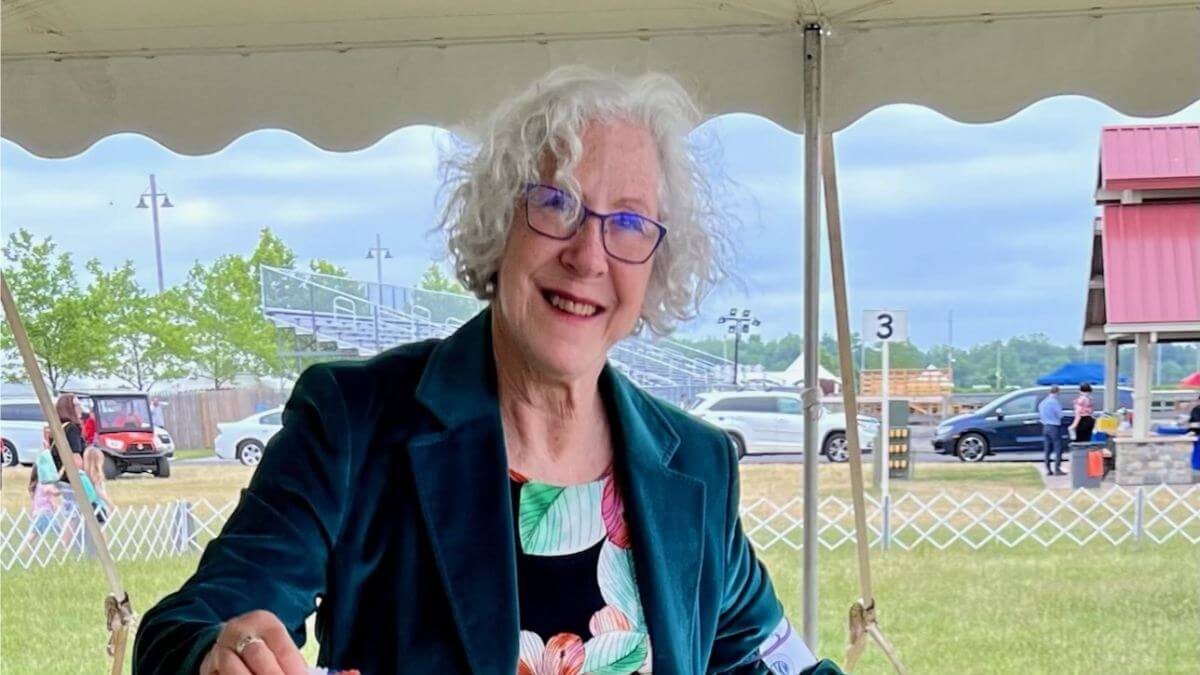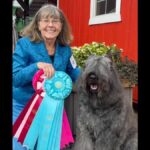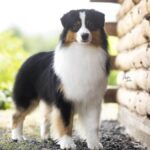Interview with Susan Nakamura, Breeder of Suzu Vizslas
- Please tell us a little bit about yourself. Where do you live? How many years in dogs? How many years as a breeder? What is your kennel name?
- What is your “process” for selecting show puppies? Performance puppies?
- In your opinion, is your breed in good condition overall? Any trends that warrant concern?
- As a Preservation Breeder, can you share your thoughts on the sport today? How’s the judging these days? What do you think about the number of shows?
- In your opinion, is social media good for the sport? Is it harmful?
- What are the biggest challenges facing the dog show community as a whole today and how can these be addressed?
- What are some of the positive changes you’ve seen in the sport over the past decade?
1. My name is Susan Nakamura of Suzu Vizslas. My father nicknamed me “Suzu” and it stuck. We are located in bucolic Westchester County, New York. I have been a preservation breeder of purebred Hungarian Vizslas since 2001 when I got my first show dog.
2. The process of selecting a show puppy is long. It starts with the pedigree and research of the sire and dam. I look for a stud dog that will complement what my girl already has and bring what is lacking to my breeding program. Once my litter is on the ground, my job as a breeder is to expose the puppies to as many things as I can. From the second day, I handle all the puppies and have them exposed to different sounds, surfaces, and temperatures. We set up a mini Agility course and have lots of toys hanging from chains and strings. The puppies learn to balance on teeters, bat at toys, go through tunnels, rip boxes apart, climb stairs, and swim in the pool. I have puppy families come and swim with their puppies as well. The more things the puppies are exposed to, the better adjusted they will be. Temperament is paramount. Of course, as a breeder, I’m always looking for conformation as my guide and rely on several trusted breeder-friends to help me evaluate conformation and temperament. Not all puppies are suited for the show ring, but we hope to narrow things down through the evaluation process.
3. I’m seeing better toplines, rear angulation, and front assembly. I’m also seeing more bone than previously, in moderation. Cancer is a growing concern. Hemangiosarcoma is a silent, deadly killer which needs to be eradicated.
Since I have been in the sport of purebred dogs, things have changed. Our goal used to be a simple championship and then we would move out to field work. Recently, the AKC has been offering more and more titles that we are encouraged to work towards. It’s not unusual to see a string of titles behind our dogs’ names. Some of us are running crazy to earn as many titles as we can. Sure, it’s fun and a great way to connect with our dogs, but it’s costly and time-consuming. The number of titles is superfluous; the conformation of the dog and the temperament should be the deciding factor in any breeding program.
Unless you are prepared to go to Florida for January and February, there are few shows to choose from. Not all show people have the time or finances to be able to take the time to go to Florida for a month or two. This necessarily requires a professional handler.
I have seen some judges sitting ringside and asking questions of exhibitors. I appreciate their willingness to really study our Breed Standard. I also admire judges who, although they may have been judging for years, still go back and review the Standard, even while judging. We need more judges like this.
4. It’s important to know that not all dogs are worthy of being bred. It is the breeder’s responsibility to ask, “What does my dog have to offer to the breed?” I choose puppies after careful evaluation of conformation and temperament. Versatile Vizslas should not only have conformation that represents the Standard but also represent the other traits our Vizslas have been bred to do, such as hunting and snuggling in the home with the children. In short, preserving what the Vizsla was bred to do.
5. Social media is great for “free” advertising, bragging, getting instant gratification, and for building majors. We just need to be mindful not to be insulting or hurtful in our comments. Once it’s out, there is no taking it back. If you don’t have something nice to say, keep it to yourself.
6. One of the biggest challenges as a whole is finding suitable venues for our shows. All too often, our show community disrespects the grounds by not picking up after our dogs. Some of our long-time venues have said, “Enough!” Other challenges are the frivolous laws being pushed through our legislatures having little or nothing to do with the health and welfare of our dogs. Our lawmakers think they have the right to make laws governing how we raise and breed dogs. If certain interest groups had their way, all dogs would be spayed and neutered regardless of pedigree, form, or function, and we would soon have no more dogs, shows, or pets. Support the measures the AKC is trying—to save our purebred dogs!
7. Over the past decade, I have seen great changes in the field of health and nutrition. When I first started, seizures were a problem that concerned many breeders. We were conscientious in sponsoring blood draws to create a database to help breeders. This is ongoing. The benefits of raw feeding have become recognized by our community at large. It used to be that vets were aghast when asked about feeding raw. Now the practice is more accepted. While raw feeding is not for everyone, it is now acknowledged by many breeders and vets as having a place in mainstream nutrition.









